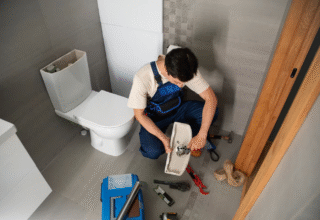
Whether you’re a nature enthusiast, birdwatcher, or just looking for a new hobby, binoculars are a great investment. But with so many different options on the market, it can be difficult to choose the perfect pair for your needs. In this blog post, we will discuss the different factors you need to consider when purchasing binoculars and provide some tips on what to look for. We’ll also recommend a few of our favorite models to get you started!
Table of Contents
What are binoculars and what are they used for?
Binoculars are two telescopes that are side-by-side and aligned to your eyes, allowing you to see distant objects as if they were closer. They are often used for outdoor activities such as birdwatching, hunting, stargazing, and concerts.
There are many different types of binoculars available on the market today ranging from small opera glasses to large astronomical models. The type of binocular you need will depend on your intended use. For example, if you’re interested in birdwatching, you’ll want a pair with a high magnification power so you can see small details from far away.
The different types of binoculars and their features
There are four main types of binoculars:
- Compact binoculars: These are small and lightweight, making them easy to carry with you on hikes or other outdoor activities. They typically have a lower magnification power than other types of binocular, but they can still be great for seeing distant objects.
- Roof prism binoculars: Roof prism binoculars are similar in size and shape to compact binaculars, but they often have a higher magnification power. This makes them ideal for birdwatching or hunting.
- Porro prism binoculars: Porro prism binoculars are larger and heavier than the other types, but they offer superior image quality. They’re also more affordable than roof prism.
- Astronomical binoculars: As the name suggests, astronomical binaculars are designed for stargazing. They have a very high magnification power and are usually mounted on a tripod.
When choosing binoculars, you’ll also need to consider the following features:
- Magnification power: This is the number that indicates how much larger an object will appear through the binoculars. For example, if a pair of binocular has a magnification power of 12x, then an object that is 12 feet away will appear as if it’s only one foot away.
- Field of view: The field of view is the width of the area you can see through the binoculars. It’s measured in feet at a distance of 1000 yards. For example, if a pair of binoculars has a field of view of 100 feet, then you would be able to see an object that is 100 feet wide from 1000 yards away.
- Exit pupil: The exit pupil is the diameter of the beam of light that enters your eye. It’s measured in millimeters and is calculated by dividing the magnification power by the objective lens diameter. For example, if a pair of binocular has a magnification power of 12x and an objective lens diameter of 42mm, then the exit pupil would be 12/42, or 0.29mm.
- Eye relief: Eye relief is the distance between your eye and the eyepiece lens. It’s important to choose a pair of binocular with enough eye relief so that you can see the entire field of view.
How to choose the right binoculars for your needs
Now that you know the different types of binoculars available, it’s time to start shopping! When choosing a pair of binoculars, there are several factors you need to consider:
- Magnification power: The magnification power is the number that comes before the “x” in a binocular’s description (e.g., “12×50”). This number indicates how much larger an object will appear through the binoculars than it would with the naked eye. A higher magnification power is great for birdwatching or hunting, but it can make objects appear blurry if they’re too close.
- Objective lens diameter: The objective lens is the large front lens on a pair of binoculars. The diameter refers to the width of this lens in millimeters. A larger objective lens will let in more light, making images appear brighter and clearer. However, it also makes binocular heavier and more difficult to hold steady.
- Field of view: The field of view is the width of the area you can see through the binoculars at a given distance. It’s measured in feet at a distance of 1000 yards. A wider field of view is better for tracking moving objects, like birds in flight.
- Exit pupil: The exit pupil is the size of the beam of light that exits the binocular and enters your eye. It’s calculated by dividing the objective lens diameter by the magnification power.
How to use binoculars correctly for the best results
Now that you know how to choose the right binoculars for your needs, it’s time to learn how to use them! Here are a few tips:
- Clean the lenses: Before using your binoculars, be sure to clean the lenses with a soft, dry cloth. This will help ensure that you have a clear view.
- Adjust the eyecups: If you wear glasses, you’ll need to adjust the eyecups so that your eyes are positioned correctly behind the lenses.
- Hold them steady: Hold your binocular steady with both hands to avoid a blurry image. You can also rest your elbows on a solid surface for added stability.
- Focus on an object: To focus on an object, look through the binocular and use the center focusing knob to bring it into sharp relief. Then, use the right eyepiece adjustment knob to fine-tune the focus until the image is clear.
We hope this guide has helped you understand how to choose and use binoculars.
Tips on taking care of your binoculars
Now that you’ve learned how to choose and use binoculars, it’s important to know how to take care of them. Here are a few tips:
- Store them in a safe place: When not in use, store your binocular in a safe place where they won’t be knocked around or dropped. A soft case is ideal.
- Avoid exposing them to extreme temperatures: sudden temperature changes can cause the lenses to crack or fog up.
- Clean them regularly: Be sure to clean the lenses regularly with a soft, dry cloth. This will help keep your binoculars working like new.
By following these simple tips, you can enjoy your binocular for years to come! Thanks for reading.
You may also like – Roof Cleaning Mistakes














